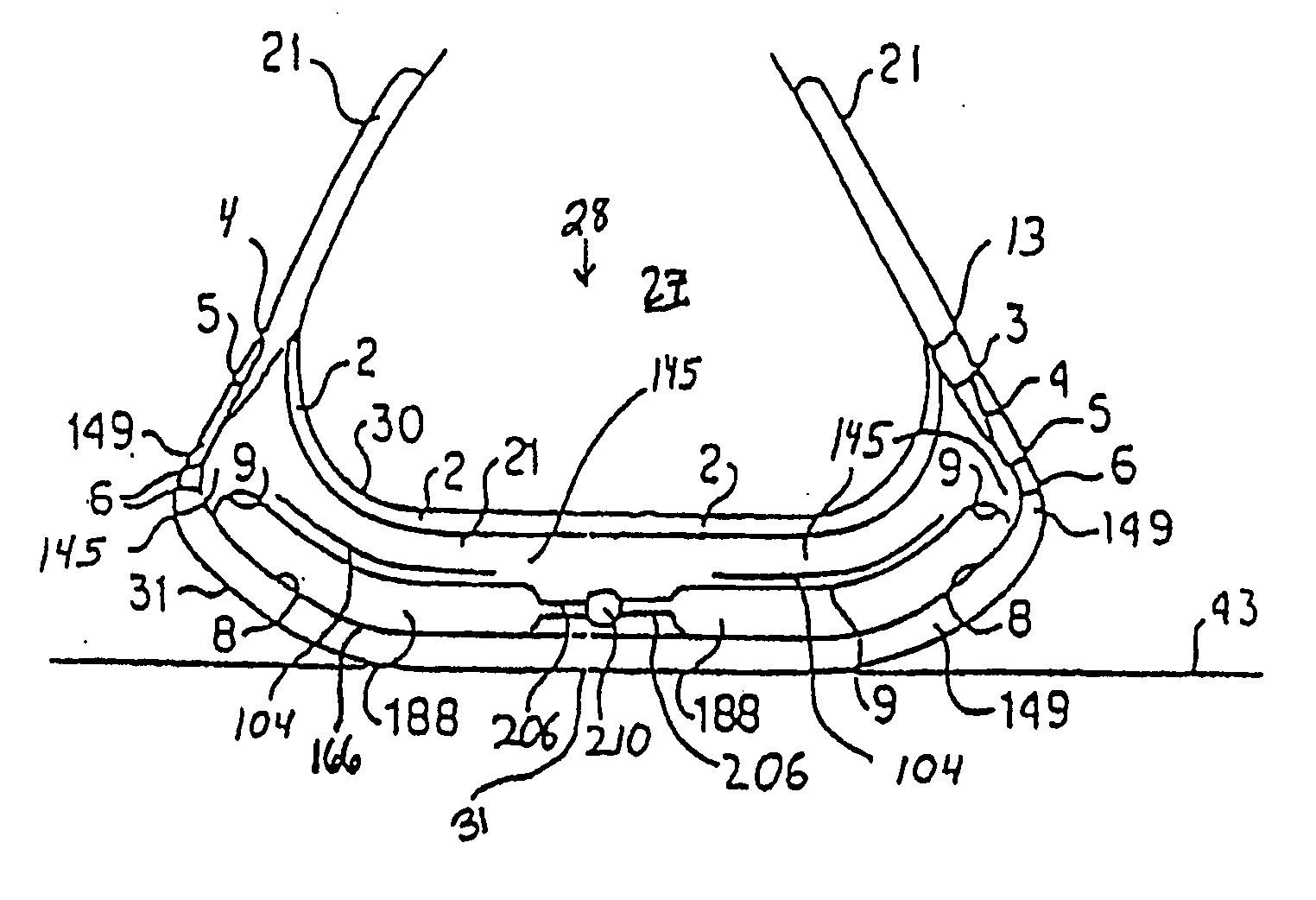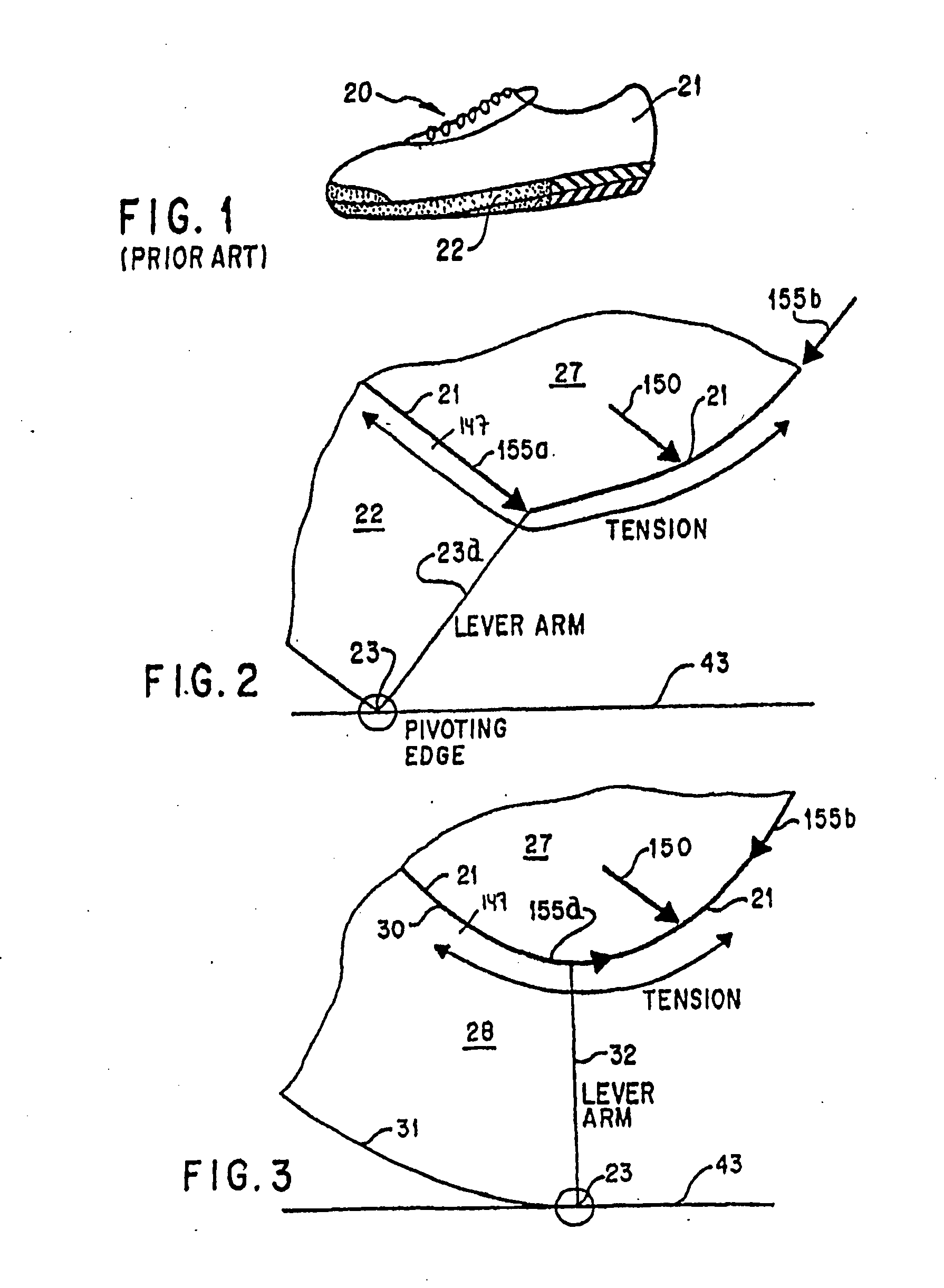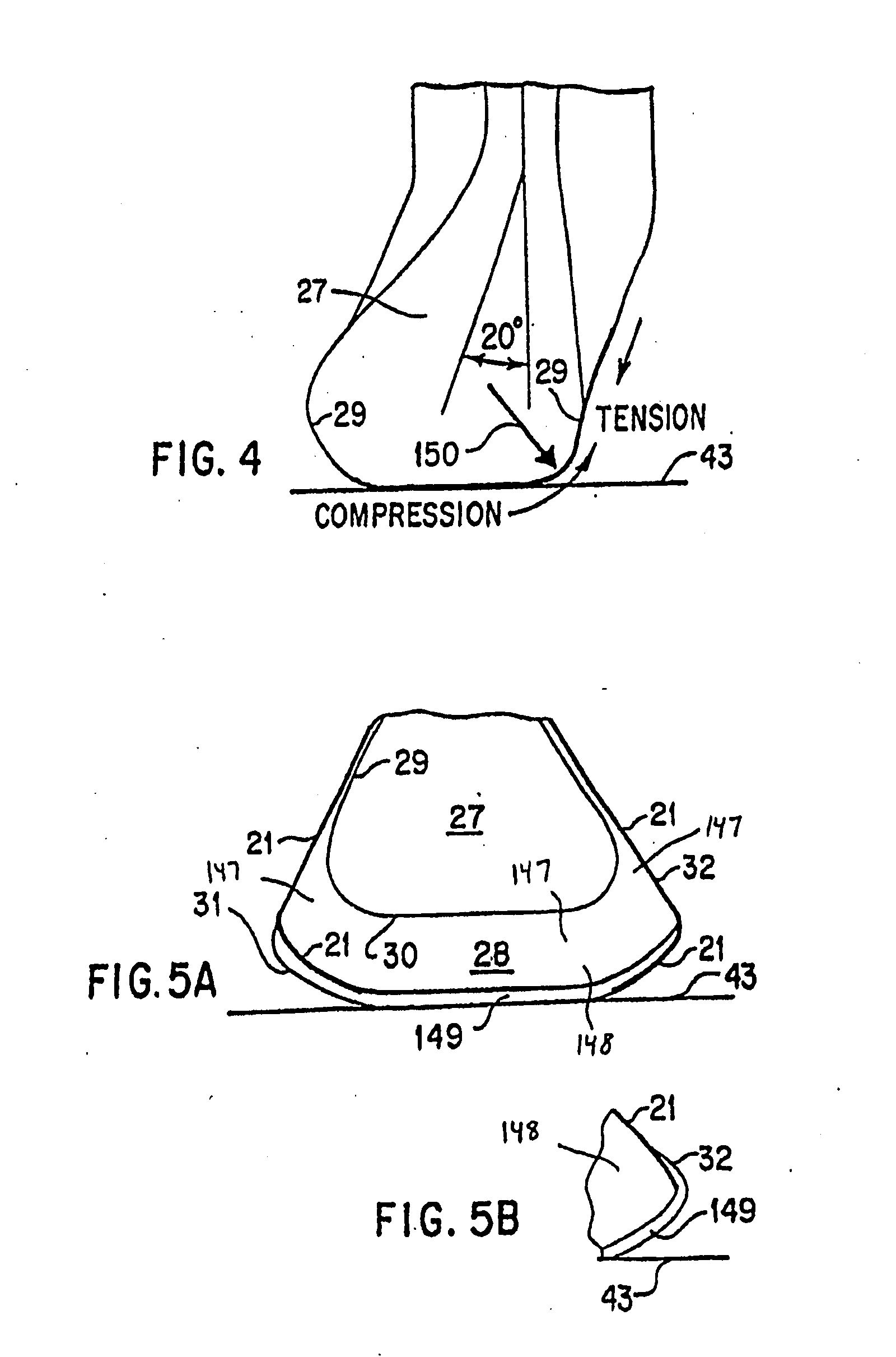Devices with internal flexibility sipes, including siped chambers for footwear
a technology of flexible sipes and devices, applied in the field of all forms of footwear, can solve the problems of affecting the rigidity of products interfacing directly with them, and the degradation of the support and cushioning of the bare foot, so as to increase the flexibility of the device, and improve the comfort of the foo
- Summary
- Abstract
- Description
- Claims
- Application Information
AI Technical Summary
Benefits of technology
Problems solved by technology
Method used
Image
Examples
Embodiment Construction
[0180]All reference numerals used in the figures contained herein are defined as follows:
Ref. No.Element Description 2insole 3attachment point of upper midsole and shoe upper 4attachment point of bottom sole and shoe upper 5attachment point of bottom sole and upper midsole 6attachment point of bottom sole and lower midsole 8lower surface interface of removable midsole section 9interface line between encapsulated sectionand midsole sections 11lateral stability sipe 12medial stability sipe 13interface between insole and shoe upper 14medial origin of the lateral stability sipe 16hatched area of decreased area of footprintdue to pronation 17footprint outline when tilted 18inner footprint outline of low arched foot 19hatched area of increased area of footprintdue to pronation 20athletic shoe 21shoe upper 21ainner or secondary shoe upper 22conventional shoe sole 23bottom outside edge of the shoe sole 23alever arm 26stabilizing quadrants 27human foot 28rounded shoe sole 28arounded stabilit...
PUM
 Login to View More
Login to View More Abstract
Description
Claims
Application Information
 Login to View More
Login to View More - R&D
- Intellectual Property
- Life Sciences
- Materials
- Tech Scout
- Unparalleled Data Quality
- Higher Quality Content
- 60% Fewer Hallucinations
Browse by: Latest US Patents, China's latest patents, Technical Efficacy Thesaurus, Application Domain, Technology Topic, Popular Technical Reports.
© 2025 PatSnap. All rights reserved.Legal|Privacy policy|Modern Slavery Act Transparency Statement|Sitemap|About US| Contact US: help@patsnap.com



